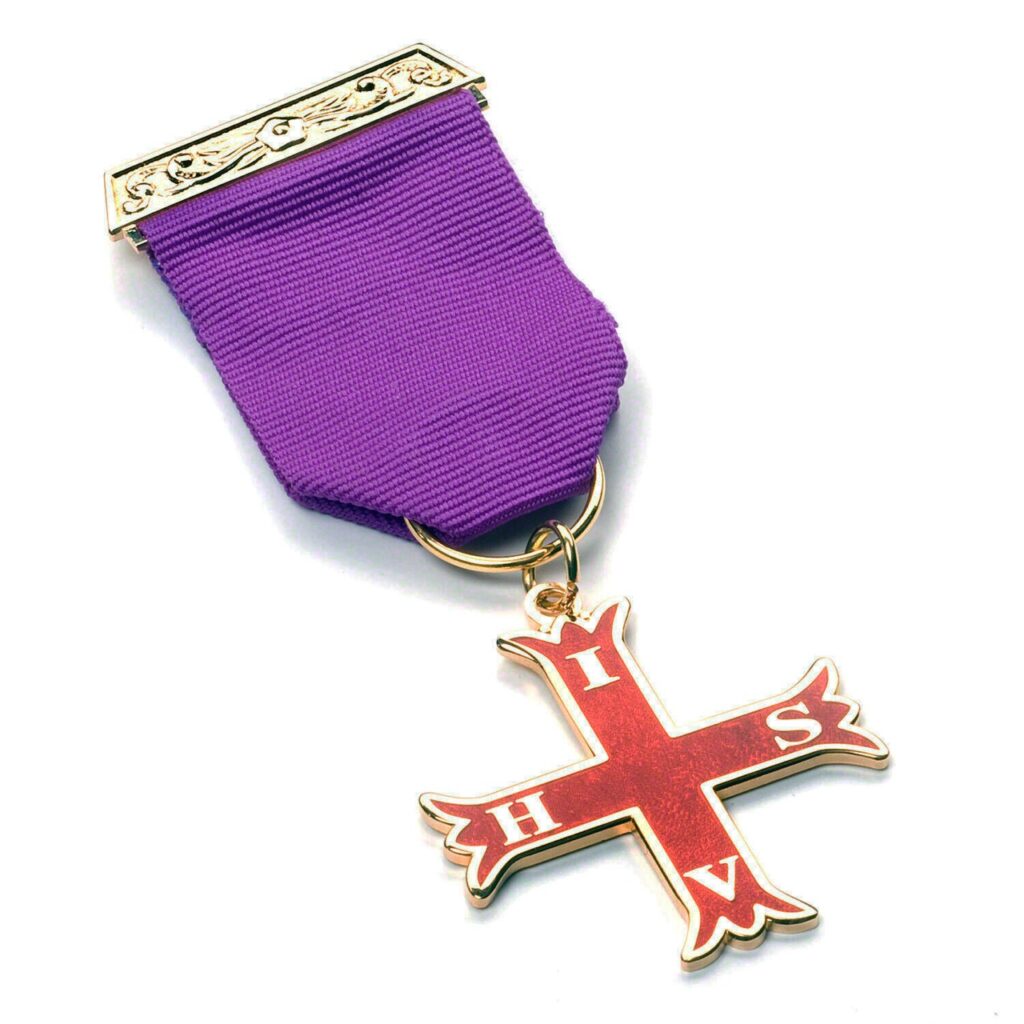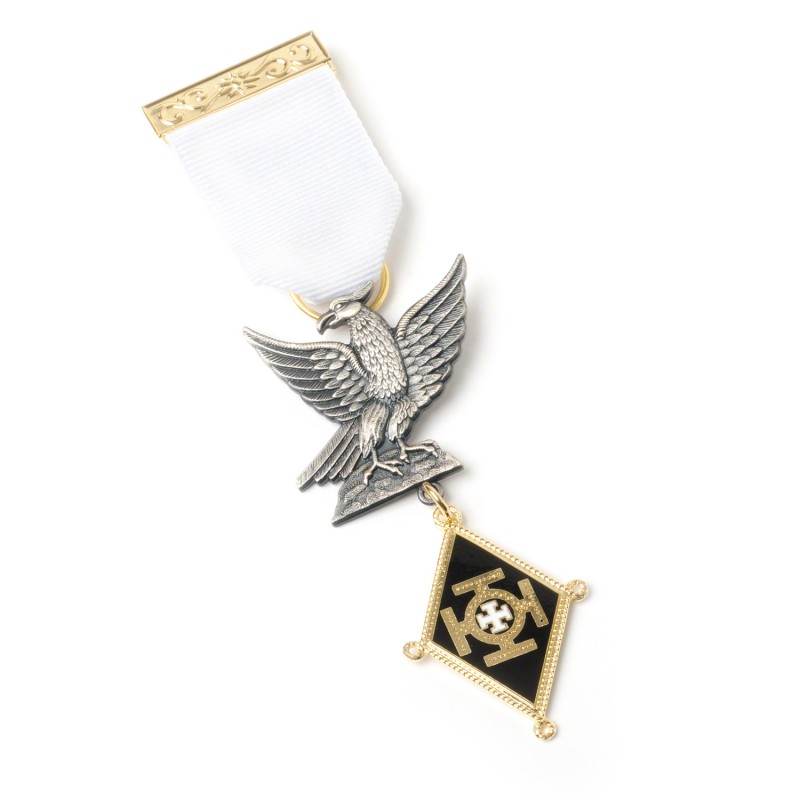about
the Order
Christian and military
The Order is governed by the Grand Imperial Conclave for England and Wales and its Divisions and Conclaves Overseas (founded in 1868) which has its seat at Mark Masons’ Hall in London. It has some 500 Conclaves all over the world and about 8500 members.
As with freemasonry in general, we enjoy a fraternal relationship with our brethren, and perform the associated ritual in a military setting, and in accordance with our religious values. We aim to promote the values of the Order within the brotherhood of Christian Masons.
The beauty of freemasonry is that its values can be found in all aspects of life – ‘Religion’ being no exception! An understanding and belief in ‘Trinitarian Christian’ values is an essential element to becoming a member of our Order. Our Rules therefore not only call for members to have a ‘Trinitarian Christian’ belief, but are also members of the Holy Royal Arch.

Whilst every candidate for admission into this Order must be a Royal Arch Mason, he is also required to confirm his true belief in the Trinitarian Christian faith, as he is embarking on an experience demanding a clear sense of religious dedication. After undergoing the Rite of Lustration, he is received under the aegis of the ‘Thirteenth Apostle’ and is enjoined to traverse the world in search of true enlightenment.
On completion of his figurative journey his attention is drawn to the imposing Standard of Constantine, around which much of the symbolism of the degree is centred. The historical legend of the foundation of the Order is then narrated, in which the Emperor’s achievements are reviewed and wherein the new Knight is reminded of his commitment to uphold the tenets of Christian chivalry thus bringing the degree to a fitting climax.
The regalia of the Degree consists of a sash of Imperial purple and a Jewel of the Order, which comprises a red cross Flory bearing the gold letters IHSV which is worn on the left breast suspended from a purple ribbon.

In May 1990 the Benelux Division of the Order was constituted, which now consists of ten Conclaves within the geographical area of the Benelux.

The Masonic Order of the Holy Sepulchre has a long and complex ritual of symbolic meaning, based upon the legend of knights guarding the supposed place of burial of Jesus Christ. Both the Masonic and ecclesiastical Orders take the Jerusalem Cross as their symbol, but whereas the ecclesiastical Order displays this cross in red on a white shield, the Masonic Order displays the cross within a circle set at the centre of a Cross potent; on the jewel (medal) of the Order, this badge is further enclosed within a black and gold lozenge. A meeting of the Order of the Holy Sepulchre takes place in a ‘Sanctuary’, and the presiding officer is called the ‘Right Reverend Prelate’, who is dressed in character; he is supported by a team of some 20 officers, including a full complement of Sepulchre guards.
The final part of the ceremony is the Brotherhood af St. John the Evangelist, presided over by the ‘Most Eminent Commander’, and illustrates the close connection to the degree of the Holy Royal Arch. The lecture of this degree explains the legendary origins and explains the mysteries of Craft masonry nowadays practised.
Admission to this Masonic Order is only granted to brethren who are Royal Arch Masons and Knights of the Red Cross of Constantine. The beautiful ceremonial is enacted as two individual points within a Sanctuary of the degree, under the presidency of a ‘Right Reverend Prelate’, who is mitred and robed in a white surplice, and bears a pastoral staff; he is supported by a team of some 20 officers, including a full complement of Sepulchre guards.

The Grand Imperial Conclave of the Military and Masonic Order of the Red Cross of Constantine and the Orders of the Holy Sepulchre and of Saint John the Evangelist, are governed from the Registry of the Orders which is situated at 86 St. James’s Street, London. The five ceremonies embodied within these Orders form a complete Rite comprising three individual ‘rituals of admission’ and two additional ‘chair degrees’. The whole is considered by many to constitute the third pillar of Christian Freemasonry.
The earliest record of the degree, The Red Cross of Constantine, was in the late 1700’s when the Early Grand Rite of Scotland actively conferred the ceremony as part of their series of forty-six Degrees: it appeared as twenty-third on the roll, the Holy Sepulchre being the twenty-fourth, and St. John the Evangelist the twenty-fifth, all bestowed in a Council of the Trinity.
There is also evidence that London publisher, William Finch, was selling the ritual of ‘The Red Cross of Constantine’ in 1812, while another entitled ‘The Red Cross of Rome & Constantine’ was published by Richard Carlile in his Manual of Freemasonry in 1825. This contains excerpts of a ceremony remarkably similar to that in use today. As far as England and Wales were concerned however, there was no regular Masonic authority controlling the degree until 1865, when a Grand Conclave of the Order was established at Freemasons’ Hall.
Little asserted that the new body was a revival of a much older organisation, being anxious that the degree be acknowledged as a regular ‘Order of Chivalry‘. He went to great lengths to authenticate his claim, yet was unable to establish a reliable pedigree; nevertheless, the Order spread at an unprecedented rate with over one hundred Conclaves being erected in nine different countries within ten years. There is little doubt that the appeal of this chivalric Order was due to the impressive nature of its admission ceremony coupled with subsequent advancement to the distinctive chairs (degrees) of Viceroy and Sovereign.
Since its emergence in London, more than a dozen sovereign Grand Conclaves of the Order have been formed around the world. That in England remains the mother Grand Conclave for all others save those of Germany and Greece, though the latter remain in amity. The grand body in Scotland continues with the older title of ‘The Grand Imperial Council of the Imperial, Religious and Military Order of Rome and the Red Cross of Constantine’, a designation which had been discarded in England by 1901.

Order of The Red Cross of Constantine and the and the Orders of the Holy Sepulchre
and St. John the Evangelist – Benelux Division
We use cookies on our website to provide information about visitors and traffic on our website.